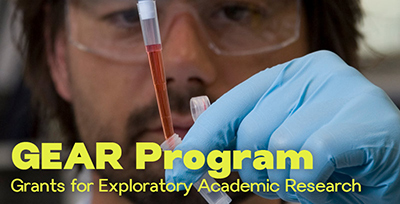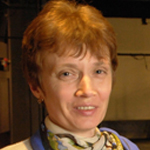SC EPSCoR Program announces 2018 Grants for Exploratory Academic Research (GEAR) Program recipients

For Immediate Release
May 8, 2018
(Columbia, SC) The SC EPSCoR State Office is pleased to announce the grant recipients of the 2018 Grants for Exploratory Academic Research (GEAR) Program.
The goal of the Grants for Exploratory Academic Research (GEAR) Program is to encourage faculty researchers at South Carolina colleges and universities to compete effectively for research funding to support the thrust-based research clusters associated with South Carolina’s National Science Foundation EPSCoR Research Infrastructure Improvement Track-1 award, MADE in SC.
The vision of MADE in SC is to discover and establish new and sustainable approaches for the design and assembly of hierarchical materials at multiple relevant length scales that service South Carolina’s STEM research, education, and workforce needs and invigorate economic development. The focus of this initiative is to discover and develop new intelligently designed optical, electrochemical and magnetic materials, stimuli-responsive polymeric materials, and interactive biomaterials, all supported by a newly-created Multiscale Modeling and Computation Core.
GEAR awards are available to single investigators who are within 10 years of their initial tenure-track appointments and pursuing high risk/high reward research. While this program is limited to single investigators (i.e., no Co-PIs), collaboration with other researchers is always encouraged to achieve the best research outcome.
Five awards with a maximum budget of $50,000 each have been made to:
 Sophya Garashchuk (University of South Carolina)
Sophya Garashchuk (University of South Carolina)
Simulation of nuclear quantum effects on properties of advanced materials employing adaptable Gaussian Bases
We will develop a novel multilayer approach to quantum/classical trajectory-driven dynamics of nuclei, based on quantum dynamics-optimized adaptable Gaussian bases for the quantum nuclei. This dynamics approach will be interfaced with on-the-fly electronic structure calculations using HPC infrastructure, enabling treatment of reactive chemical processes and large amplitude nuclear motion within the condensed phase or crystalline environment. The time-dependent framework will allow for explicit inclusion of time-dependent fields. This modeling/computational approach will facilitate studies of the nuclear quantum effects on the materials properties (crystallinity, thermal, optoelectronic and others) due to the isotope, ligand and metal center substitutions of components of advanced materials, specifically for poly-(3-hexylthiophene) polymeric system (relevant to Thrust 2) and corannulene-containing metal-organic materials (relevant to Thrust 1). The dynamics simulations will help to understand and, potentially, design properties of experimentally and technologically promising molecular systems.
 Rachel Getman (Clemson University)
Rachel Getman (Clemson University)
Intelligent design of nickel doped ferrite for enhanced energy transfer
Previous work in this field has mainly focused on iron oxides (e.g., magnetite and maghemite). The primary aim of this project is to learn how to use the composition of magnetic nanoparticles to precisely control the saturation magnetization and effective magnetic anisotropy. The PI and the SI bring together complimentary expertise in simulations and synthesis that will facilitate achieving this goal. Specifically, the PI is an expert in the computationally driven design of catalysts (materials that accelerate the rates of chemical reactions), and the SI is an expert in the theory, synthesis, and application of magnetic nanoparticles. In this project, they will combine their expertise to bring methods in computational design of materials to the field of MagMED, creating a computationally driven approach that is novel to this field. New synthesis methods based on the newly established extended LaMer approach will also be developed.
 Jessica Larsen (Clemson University)
Jessica Larsen (Clemson University)
Stimuli responsive polymeric nanoparticles as a tool for probing neurodegeneration in situ
This project will enhance standard monitoring of enzyme activity in cell lysates to livecell reporting using state-of-the-art techniques in nanoparticle development and delivery. By using pH sensitive polymeric vesicles, previously optimized and characterized by the PI, substrates of upregulated enzymes will be delivered to lysosomes, yielding direct monitoring of enzyme activities. Additionally, the inclusion of bio-responsive substrates will permit correlation of disease state progression with fluorescent signal markers released from the polymersomes. The accuracy of this biohybrid nanoparticle tool will be established with a well characterized cellular model of GM1 gangliosidosis, a lysosomal storage disorder presenting with neurodegeneration. The information gained by this project could have a transformative impact in the biomedical field, correlating complex cellular functions in neurodegeneration with a measurable and monitorable variable, ultimately leading to in vivo techniques for temporospatial analysis of neurodegeneration.
 Ying Mei (Clemson University)
Ying Mei (Clemson University)
Development of Biomaterials Informatics for Human Cardiac Organogenesis
Organogenesis describes the processes to form functional tissues and organs from a blastula. It holds remarkable promise to provide in vitro tissue/organ models for drug development as well as delivery vehicles for cell replacement regenerative medicine therapy. While organogenesis is traditionally studied using animal embryos, the recent advance in human induced pluripotent stem cell (hiPSC) technology allowed for the investigation of human organogenesis in a dish (i.e., in vitro). To this end, we recently explored the development of scaffold-free human cardiac organoids through leveraging self-assembly properties of hiPSC-derived cardiomyocytes (hiPSC-CMs) and supporting cardiac cells. While cellular assembly provides a robust and scalable method to fabricate human cardiac organoids, it offers limited tunability to modulate the assembly processes and lead to suboptimal structure/function of human cardiac organoids. To address this, my long-term goal is to use hydrogels as 3D matrices to modulate assembly of human cardiac cells to improve structure/function of resulting human cardiac organoids. In this GEAR grant, I proposed to prepare a library of alginate microgels with defined properties and investigate their effects as well as the underlying mechanisms on cardiac cell assembly into human cardiac organoids. This will allow us to 1) establish structure-function relationship between 3D hydrogel matrix and human cardiac organogenesis and 2) enable the development of biomaterials informatics to reveal fundamental mechanism behind the effects of materials properties on human cardiac organogenesis.
 Sapna Sarupria (Clemson University)
Sapna Sarupria (Clemson University)
Discovering colloidal structures using machine learning and advanced sampling methods in molecular simulations
TheThe GEAR proposal will be used to combine the expertise of our team in advanced sampling of self-assembly processes with the expertise of a team at the University of Illinois Urbana-Champaign in machine learning for structure identification in molecular systems. The goal is to develop methodologies that enable identification of structures during the assembly of nanoparticles and elucidate their potential to evolve into hierarchical assemblies. To this end, we will develop robust machine learning methodologies that can work with defective, polycrystalline and amorphous structures. The novelty of this approach lies in the combination of advanced sampling techniques with machine learning algorithms. The combined expertise of the two teams uniquely positions us to develop a framework to guide experiments for developing surface-modified nanoblocks that can self-assemble to desired structures. This collaboration will establish a synergistic experimental-simulation approach for guided nanoassembly.
MADE in SC is supported by the National Science Foundation Award #OIA-1655740.